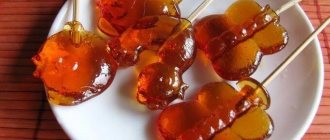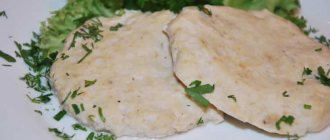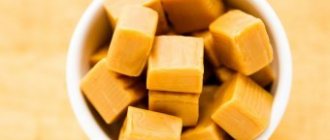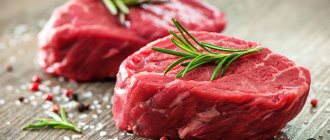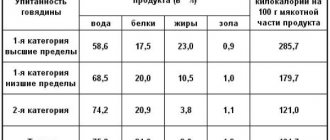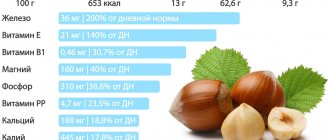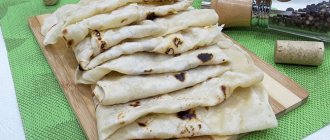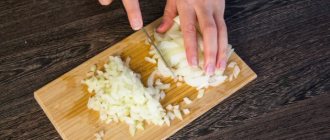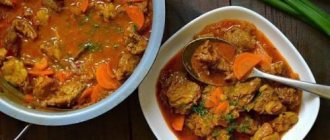Salmon
It is less nutritious than its counterpart, but very tasty and easy to prepare. Steamed fish will be even less nutritious, but today we're talking about grilled steak. 100 grams of grilled salmon contains:
Grilled pieces of chum salmon or trout are close to the performance of salmon. White fish - cod or catfish have even less nutritional value and do not pose a threat to the figure. For example, a tuna steak contains only 122 kcal. This meat is also healthy, containing all the necessary elements to maintain the health of the body.
Bird
Poultry meat is the lowest in calories. 100 grams of chicken fried steak contains only 188 kcal, and turkey has even less - 137. Other indicators are also less than, for example, marbled beef. Therefore, chicken and turkey are considered dietary foods.
Of course, the meat, for example, in Steakhouse and Burger King is different, different cooking techniques are used and there is nothing to compare. Therefore, the calorie content of foods may vary. We recommend eating fried steaks only in places where you are guaranteed to be served a delicious dish.
True meat connoisseurs know the value of a good cut of beef. Indeed, what could be better than a flavorful, freshly grilled steak?
Is it the realization that with every bite you receive not only gastronomic pleasure, but also a whole range of rare vitamins and microelements
with a relatively low calorie content. Is beef really that good, you ask? Well, let's find out!
Fat and marble
But making the right and healthy choices is very easy. Grain-fed marbled beef contains the most saturated fat. Actually, the “marbled” appearance is given to it by thin layers of fat, which give the steak the appearance of marble, and during cooking they begin to melt, making the meat very “juicy”. So from a healthy lifestyle perspective, keep in mind that marbled steaks are not the best choice.
Grass-fed beef is several times more valuable in its nutritional properties than grain-fed beef, but in turn loses in steak size and that very fatty “juiciness.” Although it can also be considered marble, since it can be obtained from the same marbled breeds of cattle.
Beef calories
Compared to pork, which is popular on our market, beef offers meat-eaters a more gentle set of calories. For those who care about the slimness of their figure and are not used to mindlessly absorbing excess fat, lean beef would be the ideal choice.
that is, parts of the carcass without fat layers.
Cooked without adding oil, such meat retains all its beneficial properties and does not contribute to the acquisition of extra pounds. Boiled beef has the greatest benefits
, which is recommended for use not only by those who want to lose weight, but also by people who need to diet for health reasons - naturally, in consultation with a nutritionist.
Calorie content of beef dishes
Beef is an important part so popular today. As a rule, it is chosen by young, energetic people, since it does not imply a constant feeling of hunger, and the results are wonderful.
Weight loss with a beef diet occurs due to the rapid absorption of protein contained in this meat and very quickly saturates the body. and a maximum of useful microelements finally put beef on a prize pedestal according to nutritionists around the world. Well, about the fact that this is the most delicious diet in the world
, I’m generally silent!
Beneficial features
Due to its balanced chemical composition and moderate calorie content, marbled meat has many positive effects on the human body. It is recommended to use:
- heart patients (reduces cholesterol levels in the blood, normalizes heart rate, dilates peripheral blood vessels);
- neurological patients (improves cerebral circulation, accelerates reaction speed, restores impaired transmission of nerve impulses);
- for anemia (stimulates hematopoiesis, increases the level of hemoglobin in the blood);
- to restore the body after injuries, operations, burns, severe infections (increases immunity, stimulates reparative processes in the body);
- with hormonal dysfunctions (insufficiency of hormones of the hypothalamic-pituitary system, diabetes mellitus, dysfunctional sexual disorders);
- pregnant women and children (enriches the body with nutrients, vitamins, macro- and microelements).
There is no scientifically substantiated evidence of the anti-carcinogenic properties of this type of beef, however, there is information in the literature that marbled meat has anti-cancer properties. This effect is probably due to the presence in meat of a large amount of vitamins that improve hematopoiesis and enhance immunity, which is important for cancer, especially after chemotherapy or radiation therapy.
Beef recipes
- 700 g beef;
- 100 g sweet pepper;
- 200 g carrots;
- 150 g onions;
- 300 g zucchini;
- 200 g cabbage;
- 15 g soy sauce;
- 20 g vegetable oil;
- salt and spices - to taste.
Cut the meat and fry it in a thick-bottomed pan, into which you first pour vegetable oil. Cut into half rings, grate, chop and send it all to the meat to stew. After a while, add chopped and diced vegetables to the meat and vegetables. When the meat is almost cooked, add the shredded meat and bring the dish until fully cooked.
Calorie content of beef stewed with vegetables is 105.8 kcal / 100 grams.
- 400 g beef brisket;
- 300 g cabbage;
- 100 g carrots;
- 200 g potatoes;
- 150 g tomatoes;
- 150 g beets;
- 50 g onions;
- 3 cloves of garlic;
- 10 g sunflower oil;
- 2 bay leaves;
- 3 liters of water;
- salt and pepper - to taste.
Boil beef broth, salt it and add cubes. Fry carrots and onions in a frying pan, add chopped tomato to them and simmer everything together a little. While the vegetables are stewing, grate them on a fine grater and also place them in the frying pan. Remove the meat from the broth and add the prepared vegetable dressing instead.
While the borscht is cooking over low heat, cut the meat into portions, chop the cabbage and peel the garlic. When the potatoes are almost cooked, add meat, cabbage to the borscht and cook for another 15 minutes. At the end of cooking, add the garlic crushed in a garlic press, turn off the heat and let the finished borscht brew for a while.
The calorie content of beef borscht is 30 kcal/100 grams.
- 500 g beef;
- 1 kg of rice;
- 300 g carrots;
- 300 g onions;
- 150 g garlic;
- 20 g vegetable oil;
- salt and pepper to taste.
Pour oil into the bottom of the cauldron and fry the meat cut into small pieces. After 5 minutes, add onions, carrots to the meat, add salt and pepper and simmer over medium heat for about 20 minutes. Then add whole peeled cloves of garlic to the cauldron, place washed garlic on top, add salt and add water so that the rice is covered by 1 finger. Simmer over low heat until all the water has evaporated.
The calorie content of pilaf with beef is 218 kcal / 100 grams.
- 200 g minced beef;
- 50 g onion;
- 1 chicken egg;
- 50 g bread;
- 50 g flour;
- salt to taste.
Soak the bread in water and then knead it with your hands until it becomes mushy. Grate the onion. In a bowl, mix the minced meat, onion, soaked bread, and add salt. Knead the minced meat thoroughly, form into small cutlets, carefully roll each one in flour and fry in a hot frying pan on both sides.
Calorie content of beef cutlets – 198 kcal / 100 grams.
- 1 kg beef;
- 3 tablespoons of tomato;
- 0.5 tablespoon of flour;
- 2 dining boats;
- 3 cloves of garlic;
- 3 onions;
- 30 g lard;
- 2 teaspoons salt;
- spices - to taste.
Cut the meat into small pieces. Fry the chopped meat in a frying pan, add the meat to it, after 5 minutes add the chopped onion and garlic. When the onions are golden, sprinkle the meat with flour and add tomato paste. Simmer the meat briefly in the tomato, then transfer the entire contents of the frying pan into a cauldron, add salt and your favorite spices, add water to cover the meat, and simmer over low heat for about an hour.
Calorie content of beef goulash – 166 kcal / 100 grams
.
- 800 g tenderloin;
- 50 g butter;
- salt and pepper - to taste.
Cut the meat into steaks approximately 4 cm thick. Melt in a hot frying pan. Season the steaks with salt and pepper and fry for 5 minutes on each side.
The calorie content of a beef steak is 220 kcal.
- 1 kg beef fillet;
- 100 ml vinegar;
- 1 liter of water;
- salt, pepper and spices - to taste.
Cut the meat into pieces, place in a deep pan, salt and add your favorite spices. Pour the contents of the pan with a mixture of vinegar and water and leave the kebab to marinate in the refrigerator overnight. Grill the kebab on the grill, pouring the marinade over the meat from time to time.
Calorie content of beef kebab is 172.5 kcal / 100 grams.
- 850 g minced beef;
- 700 g rice;
- 150 g carrots;
- 2 chicken eggs;
- 2 onions;
- 30 g vegetable oil;
- salt and spices - to taste.
Add fried onions and carrots to boiled rice, mix with minced meat and beat chicken eggs into the mixture. Season with salt and pepper and form into small patties. Fry the cutlets on both sides, and then simmer for 10 minutes under the lid.
Calorie content of beef meatballs with rice – 251 kcal / 100 g.
- 400 g beef;
- 200 g sour cream;
- 1 tablespoon starch;
- 1 onion;
- salt and pepper - to taste.
Beat the meat a little, cut into oblong pieces and sprinkle with starch. Fry the onion over high heat and add the meat to it. After 5 minutes, pour in sour cream, salt, add pepper and simmer for 20 minutes.
Calorie content of beef stroganoff is 147 kcal / 100 grams.
- 2 liters of beef broth;
- 300 g boiled beef;
- 1 carrot;
- 500 g potatoes;
- 1 onion;
- 1.5 cups peas;
- 2 tablespoons sunflower oil;
- salt, spices and herbs - to taste.
Boil the broth and add the meat cut into pieces. Rinse the soaked peas in water, place in a saucepan with broth and cook over low heat until the peas are ready.
Then add the potatoes, as well as the fried onions and carrots, to the pan. Boil the soup until the potatoes are fully cooked, then add salt, add spices, remove from heat and let sit for a few minutes before serving.
Calorie content of pea soup with beef is 77 kcal / 100 grams.
- 2 liters of beef broth;
- 1 kg of boiled beef;
- 1 teaspoon gelatin;
- 150 ml water;
- salt and pepper - to your taste.
Dissolve gelatin in water and let stand for about 15 minutes. Pour gelatin into the heated but not boiling broth, add salt and pepper to your taste. Place the meat cut into pieces into a jellied dish, pour in the broth, cool and refrigerate until completely thickened.
In fact, there are no healing foods, and beef is no exception. Remember that a sense of proportion should always accompany your gastronomic choice. Don’t get too carried away with statistics, but rather listen to your body and lose weight deliciously and with pleasure!
Beef steak is a ready-to-eat hot dish made from a thick cut of cattle meat. As a rule, meat from young animals of certain breeds is used for these purposes.
Manufacturing
The high cost of beef steaks is due to significant costs in the production of meat used for their preparation. Traditionally, meat from young bulls (no more than 1.5 years old), whose diet consists exclusively of corn or wheat, is used for these purposes. This allows you to obtain meat characterized by tender and juicy pulp with a low content of fatty tissue.
For the production of beef steaks, meat is suitable that is cut from those parts of the animal carcass that during its life were practically not involved in muscle movement. In this case, the meat is separated into thick pieces (3 to 5 cm thick) in the transverse direction. This cutting technology ensures a very even distribution of heat, significantly speeding up the process of cooking steak. It should also be noted that so-called “ripened” meat is used for its production. After cutting the animal, it is left in a room with a certain microclimate for several weeks, during which fermentation makes the muscle tissue more loose and tender.
Calorie content
100 grams of beef steak contains about 127 kcal.
Compound
Beef, salt, pepper, vegetable oil.
How to cook
Cooking beef steak involves the use of a special frying technology, which allows you to completely preserve the natural texture of the meat.
First, it is fried on a frying surface preheated to 250 degrees Celsius. In 15-20 seconds, a hard crust should form on the surface of the meat, after which it is transferred to the oven, in which the beef steak is baked at a temperature of 180-200 degrees to the desired degree of doneness: medium-rare - 4-5 minutes, medium-rare - 6- 7 minutes, almost done - 8-9 minutes, fried - 8-9 minutes, additional heat treatment in a combi oven.
How to serve
Beef steak is served either separately or with side dishes. In this capacity, as a rule, fried, boiled and stewed vegetable dishes serve.
What goes with it?
Beef steak goes well with most vegetables (cabbage, potatoes, carrots, legumes), cereals, eggs and baked goods and pasta.
How to choose
When choosing meat that you plan to use when cooking beef, you should pay attention to its appearance. The best choice would be meat from young animals, characterized by light (not bright) shades of red. In this case, you can guarantee that the final product will not be tasteless and tough.
Storage
Once cooked, beef steak should be stored in the refrigerator and consumed within a few days.
Beneficial features
Very aggressive heat exposure negatively affects the nutritional value of beef steak. However, when cooked, this dish contains quite a lot of biologically active substances that are of vital importance in the human diet. However, you can experience all the beneficial properties of beef steak only with moderate (not frequent) consumption of this dish. In particular, it stimulates the processes of hematopoiesis and the formation of bone and muscle tissue, and has antioxidant, anti-inflammatory, wound-healing, and immunostimulating effects.
Restrictions on use
Individual intolerance, cardiovascular diseases, disorders of the gastrointestinal tract, urolithiasis, gout, osteochondrosis.
ribeye steak
rich in vitamins and minerals such as: vitamin B6 - 15.1%, vitamin B12 - 83.7%, vitamin PP - 18.1%, potassium - 11.9%, phosphorus - 19.6%, selenium - 30% , zinc - 44%
- Vitamin B6
is involved in maintaining the immune response, processes of inhibition and excitation in the central nervous system, in the transformation of amino acids, the metabolism of tryptophan, lipids and nucleic acids, promotes the normal formation of red blood cells, and maintaining normal levels of homocysteine in the blood. Insufficient intake of vitamin B6 is accompanied by decreased appetite, impaired skin condition, and the development of homocysteinemia and anemia. - Vitamin B12
plays an important role in the metabolism and transformation of amino acids. Folate and vitamin B12 are interconnected vitamins that are involved in hematopoiesis. A lack of vitamin B12 leads to the development of partial or secondary folate deficiency, as well as anemia, leukopenia, and thrombocytopenia. - Vitamin PP
is involved in redox reactions of energy metabolism. Insufficient vitamin intake is accompanied by disruption of the normal condition of the skin, gastrointestinal tract and nervous system. - Potassium
is the main intracellular ion that takes part in the regulation of water, acid and electrolyte balance, and is involved in the processes of conducting nerve impulses and regulating blood pressure. - Phosphorus
takes part in many physiological processes, including energy metabolism, regulates acid-base balance, is part of phospholipids, nucleotides and nucleic acids, and is necessary for the mineralization of bones and teeth. Deficiency leads to anorexia, anemia, and rickets. - Selenium
is an essential element of the antioxidant defense system of the human body, has an immunomodulatory effect, and is involved in the regulation of the action of thyroid hormones. Deficiency leads to Kashin-Beck disease (osteoarthritis with multiple deformities of the joints, spine and limbs), Keshan disease (endemic myocardiopathy), and hereditary thrombasthenia. - Zinc
is part of more than 300 enzymes and is involved in the processes of synthesis and breakdown of carbohydrates, proteins, fats, nucleic acids and in the regulation of the expression of a number of genes. Insufficient consumption leads to anemia, secondary immunodeficiency, liver cirrhosis, sexual dysfunction, and the presence of fetal malformations. Research in recent years has revealed the ability of high doses of zinc to disrupt the absorption of copper and thereby contribute to the development of anemia.
more hide
You can see the complete directory of the most useful products in the application
So, steak translated from English means “piece of meat”. But it’s worth adding that this is a piece of good, high-quality meat. Not all parts of a cow, pig or sheep are suitable for cooking steak. For example, you would never make a steak from the shoulder, neck, or outer hind leg muscle. These parts of the animal's body are in constant motion, so the meat in them is tough. The best type of meat to cook steak is tenderloin. It is soft even in the oldest cow. Entrecote and other parts of meat located near the ridge can also be suitable for cooking steak.
Chemical composition
Marbled beef is rich in fats, proteins and contains virtually no carbohydrates. The calorie content of this meat is low - 170 kcal/100 g, which classifies it as dietary meat products.
The meat has a soft and juicy taste due to its moderate fat content - up to 10 g per 100 g of raw product. At the same time, this fat contains few saturated fatty acids - about 3.5 g, which is only 30% of their total amount. Marbled beef also contains a small amount of cholesterol - 40 mg per 100 g (for comparison, lean beef - 57 mg).
The bulk of intermuscular fat is represented by unsaturated fatty acids, including those from the omega group (omega-3 and omega-6). Their presence allows marbled beef to be consumed even by people with a high risk of atherosclerosis and cardiovascular diseases.
Beef protein (18 g/100 g) is complete.
It contains all the amino acids necessary for the human body. In addition to nutrients, marbled beef contains many vitamins and minerals. Vitamin composition
| Name | Content per 100 g, milligrams |
| Vitamin B1 (thiamine) | 0,085 |
| Vitamin B2 (riboflavin) | 0,131 |
| Vitamin B4 (choline) | 89,8 |
| Vitamin B5 (pantothenic acid) | 0,618 |
| Vitamin B6 (pyridoxine) | 0,637 |
| Vitamin B9 (folic acid) | 0,012 |
| Vitamin B12 (cyanocobalamin) | 0,0016 |
| Vitamin PP (nicotinic acid) | 6,42 |
| Vitamin E (alpha tocopherol) | 0,33 |
| Vitamin K (phylloquinone) | 0,0013 |
Marbled beef is a source of the vitamin-like substance choline, which is also known as vitamin B4. 100 g of this meat contains up to 20% of the body’s daily requirement for this substance. Choline, in combination with other vitamins, takes an active part in metabolic processes throughout the body, and also affects the functioning of the parasympathetic part of the autonomic nervous system, since it is a precursor of acetylcholine, a mediator of impulses in nerve endings.
Cyanocobalamin stimulates hematopoietic function, being an antianemic vitamin. By restoring normal intestinal microflora, vitamin B12 improves immunity.
Nicotinic acid is useful for people suffering from cardiovascular diseases and cerebrovascular disorders.
Mineral composition
| Name | Content per 100 g, milligrams |
| Potassium | 340,0 |
| Phosphorus | 207,0 |
| Sodium | 58,0 |
| Magnesium | 23,0 |
| Calcium | 20,0 |
| Iron | 1,81 |
| Zinc | 3,98 |
| Copper | 0,094 |
| Manganese | 0,013 |
| Selenium | 0,026 |
This type of meat contains a lot of phosphorus, a chemical element that is part of many enzymes, hormones, proteins and phospholipids of the cellular framework. Iron is contained in marbled beef in a bioavailable, easily digestible form.
Types of steaks
In modern classification, it is customary to distinguish about 10-13 types of steaks. The name of each species depends on the part of the animal's body from which the meat was cut. The most popular types are the following types (from the upper part of the hip bush), filet mignon (the leanest part of the cow, the sirloin part of the central tenderloin), tornedos (meat pieces from the central part of the tenderloin, used to make medallions), ribeye steak (the fattest part steak, cut from the supracostal space of the animal).
Beef steak: step-by-step cooking instructions
There are two ways to cook beef steak: grilling and frying in oil in a pan. Of course, the first method is the most useful and lower in calories. If you take a fried beef steak, its calorie content will be from 250 to 380 kcal. These are high indicators, so doctors do not recommend consuming this type of meat more than once a week. But the calorie content of a steak will be about 200 kcal per 100 grams of product. This certainly makes it more beneficial for our health and figure.
In this article we will tell you how to cook steak without oil on the grill. For preparation you will need a minimum of ingredients, and the end result will be a delicious dish. The calorie content of a beef steak prepared according to this recipe will be only 215 kcal per 100 g of product.
We will need the following ingredients:
- beef tenderloin - 300 grams;
- garlic - a couple of cloves;
- lemon juice - 1 tablespoon;
- thyme, caraway seeds, pepper - 0.5 teaspoon each;
- cloves - several grains;
- salt - to taste.
Let's start cooking beef steak on the grill.
- Rinse the tenderloin under running water and pat dry with a paper towel to remove excess moisture.
- For the marinade, mix lemon juice, garlic squeezed through a press, thyme, cumin, pepper, cloves (first grind into crumbs).
- You need to thoroughly rub the meat with marinade. Let stand for 20 minutes.
- Grill for 4 minutes on each side. Then, to get the grill, you need to turn the steak perpendicularly (fry for a minute), turn over and fry for another 1 minute.
This way we will get an appetizing medium-fried steak.
Use in cooking
Marbled beef can be prepared in different ways: fry in a frying pan, grill, boil, stew, bake in the oven. Most often it is used for cooking steaks.
Americans consider marbled beef the ideal meat for steaks: this meat makes them juicy and soft. The method and recipe for their preparation depends on the thickness of the cut used for the steak. There are four types of marbled meat cuts for steaks: tenderloin (sirloin), ribeye (thick edge), striploin (thin edge) and T-bone (T-bone).
Cooks distinguish 6 degrees of roasting of steaks, which differ in the juiciness of the meat and the temperature inside it after frying:
- raw steak (“blue-rea”);
- with blood (“rea”);
- medium-raw (“medium-rea”);
- medium rare (“medium”);
- almost cooked (“medium-vel”);
- fully fried (“vel-dan”).
The first and last degrees of roasting are not used when preparing steaks from marbled meat. It is believed that such delicate meat should be undercooked. In order for the juices to remain inside the steak, the meat must be “sealed”, that is, fried on both sides at a temperature of 220-250°C for 1.5-2 minutes on each side. As a result, a crust forms on the surface of the piece of beef, which prevents it from drying out during frying.
Next, the steak is brought to readiness at a temperature of 170-180°C. Cooking time depends on the desired degree of doneness. Once cooked, cover the steak with foil and let it rest on a hot plate for a few minutes.
In addition to steaks, many other dishes are prepared from marbled beef: in Japan - sashimi, shabu-shabu, sukiyaki, in Europe - carpaccio, tartar, roast. Steaks and dishes made from this meat are combined with olive oil, herbs (basil, thyme, rosemary), grilled vegetables (tomatoes, eggplants, sweet peppers, mushrooms), fruits (peaches, apricots, raisins, dried apricots) and fruit purees, berries sauces. Red wines highlight the delicate aroma and taste of steaks well.
Beef steak calories
Calorie content, depending on the part of the carcass you use, can vary from 190 to 300 kcal per 100 grams of product. Let's take the middle option. The calorie content of a beef steak is 220 kcal per 100 grams. The distribution of proteins, fats, carbohydrates is as follows: 3.10 g / 19.2 g / 15.3 g. As you can see, beef steak is rich in proteins and animal fats. This dish can be called healthy, and nutritionists advise eating beef even while on a diet. But if you are on a diet, choose lean parts of the cow and cook the steak without adding oil. Then it will not harm your figure, but, on the contrary, will become a source of sodium, potassium, phosphorus and selenium, which, in turn, will allow your body to more easily tolerate the diet and keep your nails, hair and teeth healthy and beautiful.
